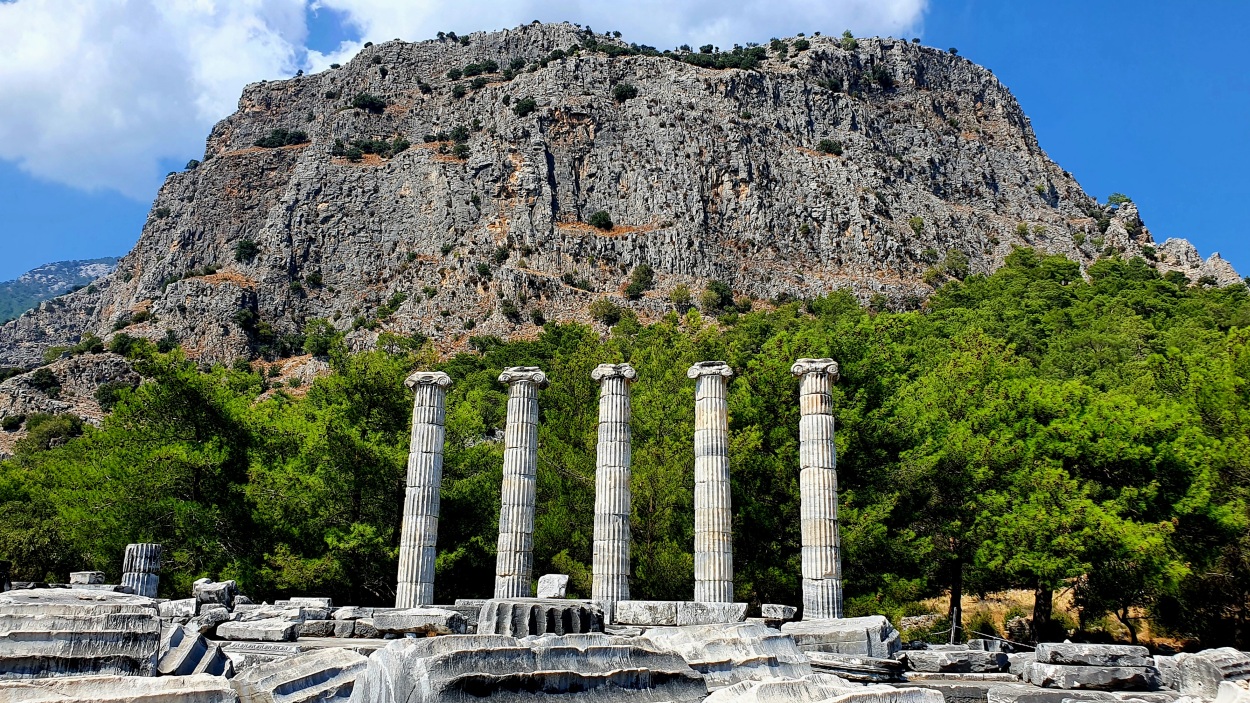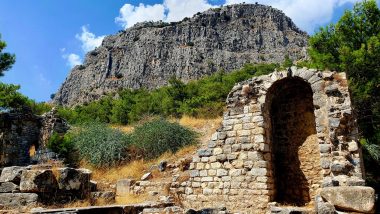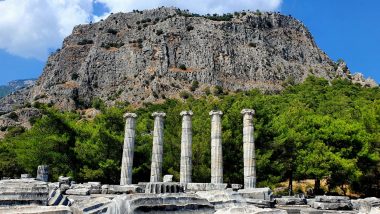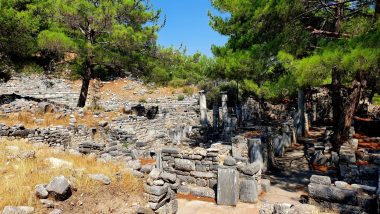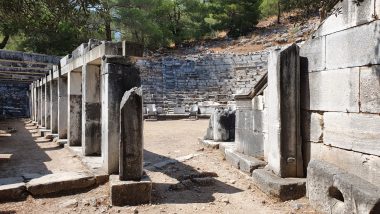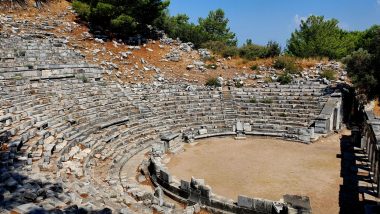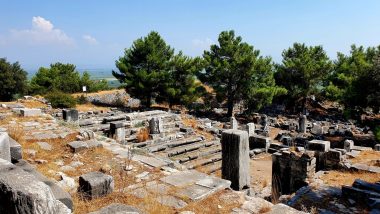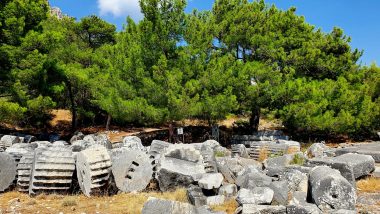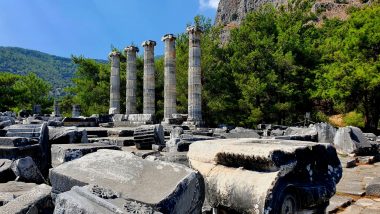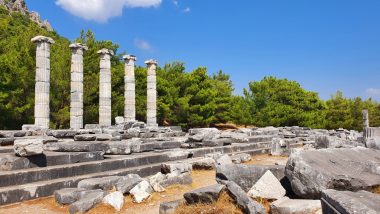Another stop we made at the ancient city of Priene located 10 kilometers north of the Menderes River and 16 kilometers inland from the Aegean Sea, in southwestern Turkey (🎫 20 TRY). Its well-preserved remains are a major source of information about ancient Greek town planning. Priene enjoys a commanding position just below Mt Mykale, giving it a real natural grandeur. This Greco-Roman site is delightful to explore, with pine trees providing shade while its isolated location deters the crowds. It was once a developed port city with two harbors. But all that went pear-shaped when the changing course of the Büyük Menderes River silted them both up. Today it’s very peaceful, its elevated position giving stunning vistas across patchwork fields. Priene was important by 300 BC (when the League of Ionian Cities held congresses and festivals here), peaking between then and 45 BC. It was sacked by Ardys of Lydia in the 7th century BC but regained its prosperity in the 8th. Captured by the generals of the Persian king Cyrus, the city took part in several revolts against the Persians (499–494). Priene originally lay along the Maeander River’s mouth, but about 350 BC the citizens built a new city farther inland, on the present site. The new city’s main temple, Athena Polias, was dedicated by Alexander the Great in 334. The little city grew slowly over the next two centuries and led a quiet existence; it prospered under the Romans and Byzantines but gradually declined, and after passing into Turkish hands in the 13th century AD, it was abandoned. Excavations of the site, which is occupied by the modern town of Samsun Kale, began in the 19th century.
Parking location – Priene: 37.660458N 27.301290E (🚻)


